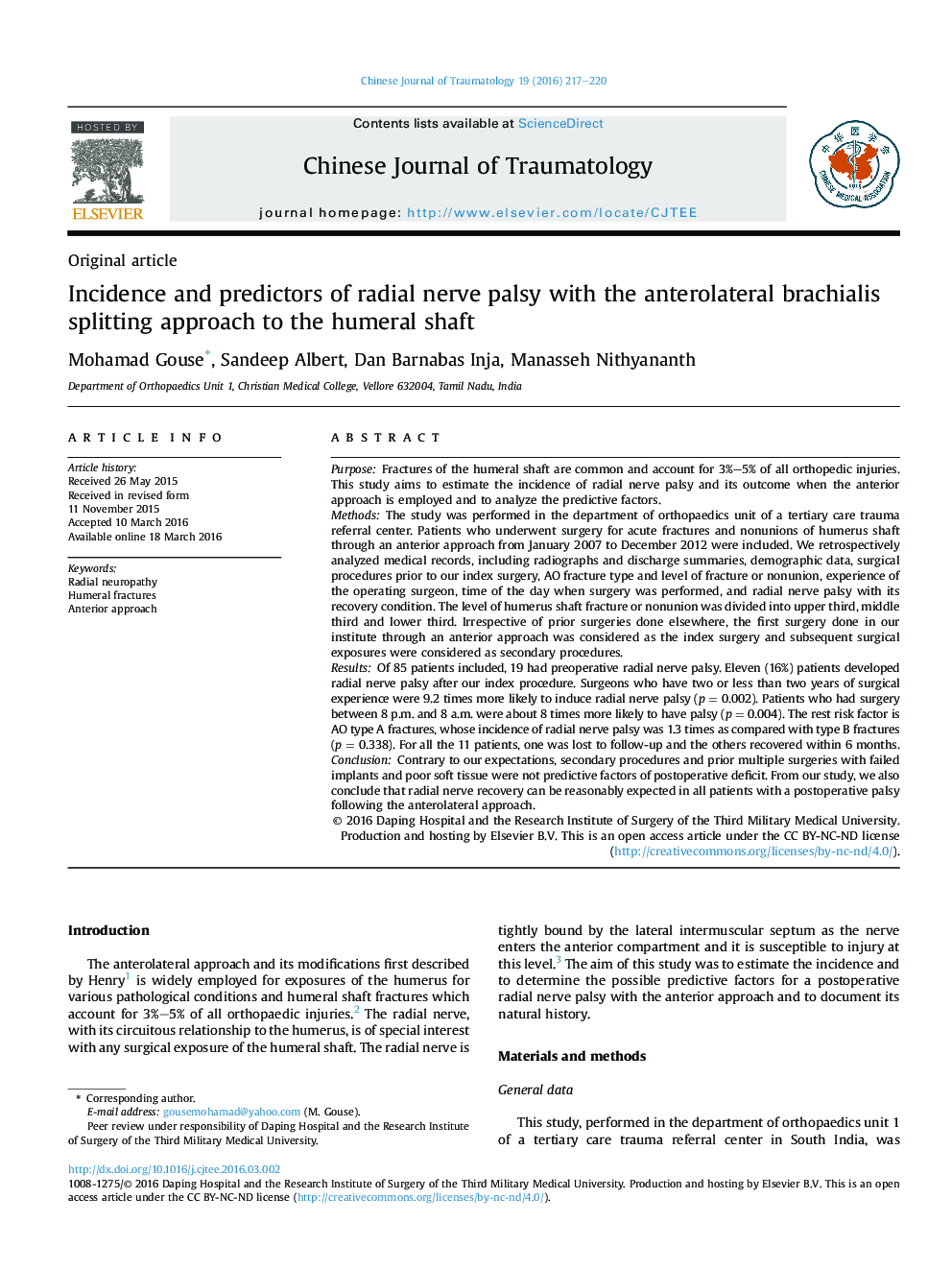| کد مقاله | کد نشریه | سال انتشار | مقاله انگلیسی | نسخه تمام متن |
|---|---|---|---|---|
| 3107056 | 1581744 | 2016 | 4 صفحه PDF | دانلود رایگان |
PurposeFractures of the humeral shaft are common and account for 3%–5% of all orthopedic injuries. This study aims to estimate the incidence of radial nerve palsy and its outcome when the anterior approach is employed and to analyze the predictive factors.MethodsThe study was performed in the department of orthopaedics unit of a tertiary care trauma referral center. Patients who underwent surgery for acute fractures and nonunions of humerus shaft through an anterior approach from January 2007 to December 2012 were included. We retrospectively analyzed medical records, including radiographs and discharge summaries, demographic data, surgical procedures prior to our index surgery, AO fracture type and level of fracture or nonunion, experience of the operating surgeon, time of the day when surgery was performed, and radial nerve palsy with its recovery condition. The level of humerus shaft fracture or nonunion was divided into upper third, middle third and lower third. Irrespective of prior surgeries done elsewhere, the first surgery done in our institute through an anterior approach was considered as the index surgery and subsequent surgical exposures were considered as secondary procedures.ResultsOf 85 patients included, 19 had preoperative radial nerve palsy. Eleven (16%) patients developed radial nerve palsy after our index procedure. Surgeons who have two or less than two years of surgical experience were 9.2 times more likely to induce radial nerve palsy (p = 0.002). Patients who had surgery between 8 p.m. and 8 a.m. were about 8 times more likely to have palsy (p = 0.004). The rest risk factor is AO type A fractures, whose incidence of radial nerve palsy was 1.3 times as compared with type B fractures (p = 0.338). For all the 11 patients, one was lost to follow-up and the others recovered within 6 months.ConclusionContrary to our expectations, secondary procedures and prior multiple surgeries with failed implants and poor soft tissue were not predictive factors of postoperative deficit. From our study, we also conclude that radial nerve recovery can be reasonably expected in all patients with a postoperative palsy following the anterolateral approach.
Journal: Chinese Journal of Traumatology - Volume 19, Issue 4, August 2016, Pages 217–220
